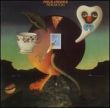by acoustic electric and a hollow body electric guitar. I'm assuming your saying flattop acoustic vs electric Achtop.
well first the flattop is design to be played acoustically verse the electric achtop is design(talk about a bit down) to be played with a amp, also some(most/all in my opinion but some might fooly disagree but i wont go there) just sound bad played acoustically. Also now in days a acoustic electric uses piezo pickups(was going to talk about, but just read wiki on it) where a hollow body electric guitar uses magnet pickups(again wiki for difference), but should just be look at as acoustic electric = acoustic with pickup slapped on, and hollow body electric guitar = electric guitar with a cavity(simplified to extreme also seeing as hollow came before solid)
gx1327 says:
but does the hollow body resonate sound from the vibration of the strings in the same way that an acoustic guitar does? only slightly?
all guitars get at lest part of there sound from the top resonating(even electrics, more to do with how vibrations move through it then the timbre of the wood or material, with electric it[timbre] mostly comes from the amp), just electrics get more from direct string vibrations and electromagnetics.
*timbre talk, is excluding actually finger work which is the main factor*
gx1327 says:
how about semi-hollow body?
little history; swing Jazz is in it's heyday and guitarist are trying to be louder.
guitars,lutes in general, are very quite instrument, very dynamic in all fields of sound, but there highest amplitude is no where near that of a pianos, vio family, brass, ect. instruments. and because of the piano, lutes in generally kind of died in western music for a bit(where still paying for that with all these crappy guitars running a muck
so to be louder they made the achtop guitar to help compete against the others in terms of amplitude. Then the achtop(still very much acoustical) got magnetic pickups slapped on it, now all amp problems are solved? now quite there is a new problem the dreaded "feedback"
you see to give an acoustic guitar the best harmonics and sound quality and amp and all the rest. It's best to have the thinnest top and the lest amount of bracing(think smallman guitars), now obviously best is a matter of opinion/music your playing(flamenco tends to have thicker top for a more percussion sound, but even in classical it varies think Bream vs Williams). Now that it is great for acoustic guitars but all these natural and pleasing vibrations cause massive feedback once the volume get past a certain point. So how to deal with this? First make the top thicker and give more bracing, then make the top lamented to cut down on unwanted vibrations(not all cause feedback there got to be math on it but i don't know it), then came semi-hollow. which is now instead of having the whole thing be hollow put a solid block of wood in it. now this could be like a Rickenbacker with hollow wings or a Gibson 355 with just a block at the top(i think? i would check on that). Then came to where it is now solid body.
gx1327 says:
i have never used one. heck the only electric i've played is my squier affinity strat. but i'm curious what the differences in sound is with a solid body vs. hollow (vs. semi-hollow) body construction. is it noticeable when the guitar is un amplified? is it noticeable in the amplified output? obviously the construction of the body would affect the tonal qualities of the guitar...
Like i said there designed to be electric not acoustic so don't buy an electric guitar over how it sounds unplugged. Do they sound different yes, but as I'm sure you know, everything does, and the only way to know whats right for you is to go out and play.





